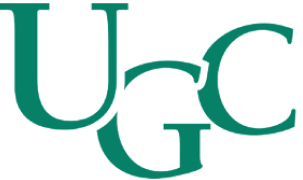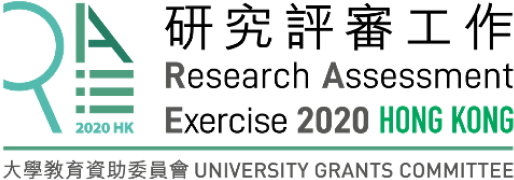Unit of Assessment:
Research categories:
?Clinical Medicine
Integrative & Complementary Medicine (2)
Pharmacology & Toxicology
Pharmacology & Pharmacy (3)
Chemistry, Medicinal (2)
Plant & Animal Science
Plant Sciences (2)
Case Study
Developing Quality Standards for Herbal Medicines: Translating Research into Public Health and Chinese Medicine Trade.
1. Summary of the impact
In the past, Chinese herbs were usually prescribed without any authentication and testing because of the insufficiency of reference standards and testing methods. Our research team is among the founding research institutes for the establishment of the Hong Kong Chinese Materia Medica Standards (HKCMMS) project. This project has changed the practice of the suppliers of Chinese medicines and increased awareness of the Chinese medicine sectors on quality and safety as evidenced by the significant decrease in the cases of poisoning. It helps to promote Chinese medicines trade and facilitates the industries to expand business in both local and oversea markets.
2. Underpinning research
The objectives of this research project are to provide applicable and adoptable references for the CMM trade, to ensure the safety and quality of CMM in protection of public health, to harmonize with the international standards, and to facilitate the trade in Chinese medicines industry.
The project started in 2002 which was co-ordinated and funded by the Department of Health, the Government of Hong Kong SAR. The quality assurance / quality control (QA/QC) research team in School of Chinese Medicine (SCM) of CUHK was one of the two laboratories responsible for conducting the research work of this project. At that time, the QA/QC research team was led by Prof. Che Chun-Tao, the Director of SCM, who is also a member of International Advisory Board of HKCMMS. As Prof. Che was retired from CUHK in 2010, the team was sequentially led by Prof. Albert Leung (Director from 2011-2016) and Prof. Lin Zhixiu (Acting / Associate Director, 2016-Present), respectively.
The first phase of research results have been published as Volume I of HKCMMS in 2005. Among the nine monographs of this standards, five of them were contributed by our research team. In addition, our research work has established the framework for the future development of HKCMMS which included (1) the techniques for conducting research work; (2) the methods and principles for setting reference values, and (3) measurement uncertainty for general tests. Our research work on improvement for the determination of aflatoxins (section 3.1) has been adopted by HKCMMS and was aptly applied in subsequent volumes of HKCMMS.
Since the publication of Volume I of HKCMMS, the standards have been gaining popularity from Chinese medicine traders and academics. More and more research groups from different research institutes have joined this project. As a founding research team for the HKCMMS project, we have provided training and consultancy to these research teams to support the further development and growth of HKCMMS project. As of August 2019, nine volumes of HKCMMS have been published, covering reference standards for a total of 299 commonly prescribed Chinese herbal materials. Our research team has contributed most to this project in terms of the number of CMMs. The HKCMMS is now recognized as a well-known reference standard by many Chinese medicine traders and overseas organizations.
Up to now, we have obtained more than 40 million dollars research funding for this project which has allowed us to build up a persistent and reputable research team. The team has published research results by integrating analytic and biological studies (sections 3.2-3.5). The team was able to join in large international collaboration projects (for example: “Development of International Center for Research on Complementary and Alternative Medicine, 3.5 million US dollars funded by NIH, USA) (section 3.6). The team regularly provides analytical service on herbal medicines to many local commercial laboratories. The development of HKCMMS, a substantial part of which has been contributed by our research team, has led to a significant change in practice by the supplier of medicinal herbs as described in section 4.
3. References to the research
3.1 Ip SP, Che CT. Determination of aflatoxins in Chinese medicinal herbs by high-performance liquid chromatography using immunoaffinity column cleanup. Improvement of recovery. Journal of Chromatography A 1135:241-244, 2006.
3.2 Xian YF, Lin ZX, Ip SP, Su ZR, Chen JN, Lai XP. Comparison the neuropreotective effect of Cortex Phellodendri Chinensis and Cortex Phellodendri Amurensis against beta-amyloid- induced neurotoxicity in PC12 cells. Phytomedicine 20:187-93, 2013.
3.3 Xian YF, Mao QQ, Wu JC, Su ZR, Chen JN, Lai XP, Ip SP, Lin ZX. Isorhynchophylline treatment improves the amyloid- β -induced cognitive impairment in rats via inhibition of neuronal apoptosis and tau protein hyperphosphorylation, Journal of Alzheimer's Disease 39:331-46, 2014.
3.4 Lai ZQ, Ip SP, Liao HJ, Lu Z, Xie JH, Su ZR, Chen YL, Xian YF, Leung PS, Lin ZX. Brucein D, a Naturally Occurring Tetracyclic Triterpene Quassinoid, Induces Apoptosis in Pancreatic Cancer through ROS-Associated PI3K/Akt Signaling Pathway. Frontiers in Pharmacology 8:936, 2017.
3.5 Xian YF, Hu Z, Ip SP, Chen JN, Su ZR, Lin XP, Lin ZX. Comparison of the Anti-inflammatory Effects of Sinapis alba and Brassica juncea in Mouse Models of Inflammation. Phytomedicine, 50:196-204, 2018.
3.6 Ip SP, Zhao M, Xian YF, Chen ML, Zong YY, Tjong YW, Tsai SH, Sung JJ, Bensoussan A, Berman B, Fong HH, Che CT. Quality assurance for Chinese herbal formulae: standardization of IBS-20, a 20-herb preparation. Chinese Medicine 5:8, 2010.
4. Details of the impact
Public Health
Chinese medicines are naturally occurring materials and their quality is affected by many factors. Many Chinese medicines have similar appearance and they are very easily mixed up. Many cases of poisoning have been reported as a result of the confusion on the identities of these herbal drugs. From 2000 to 2002, twenty cases of poisoning by consuming Chinese herbal medicines were reported by Faculty of Medicine, CUHK (section 5.1). From 2000 to 2004, a total of 62 cases of adverse effects caused by consuming Chinese medicines were notified to Department of Health (section 5.2). From July 2004 to June 2005, 8 cases of Chinese medicines-related adverse effects were documented by Department of Health. Among all these adverse cases, 26 cases needed hospitalization (section 5.3). Since the publication of first volume of HKCMMS in 2005, HKCMMS have been increasingly quoted by local and overseas authorities, organizations, and the industry. “The awareness of the Chinese medicine sectors on the quality and safety of CMM has been enhanced in recent years” as described by Director of Department of Health, The Government of Hong Kong SAR (section 5.4). According to the statistical data in “Poisoning Watch” published by Centre for Health Protection, 58 cases of aconitine poisoning from improper intake of Chinese medicines containing aconitum alkaloids were reported to Department of Health in 2008-2010 (section 5.5). The number of reported cases was drastically reduced to 18 in 2014-2016 (section 5.6).
The decreased number of poisoning cases of herbal medicines may be also attributed to the change of practice by some suppliers of herbal medicines. In the past, medicinal herbs were usually prescribed to patients without any authentication and testing. Therefore, cases of poisoning by consuming herbal medicines were recorded when the prescribed herbs were adulterated or confused with toxic herbs with similarity in name or appearance. From 2012 to now, our research team has been providing screening tests annually to Hospital Authority. The service is to conduct chemical analysis on Chinese medicines to make sure that the herbs used in all Chinese Medicine Centres of Hospital Authority are free from the contamination of aconitum alkaloids or tropane alkaloids.
In recent years, certificates to demonstrate the safety and quality of Chinese herbal medicines have been requested by some big herbal companies. Our research team has provided such service to the wholesalers of Chinese medicines in Hong Kong, such as Nong’s Company Limited, Longing Enterprises Limited, and Kwok Shing Hong Medicine Company Limited.
Chinese Medicines Trade
The Chinese Medicine Ordinance (Chapter 549, Law of Hong Kong) was enacted in 1999. Various regulatory measures such as the registration of proprietary Chinese medicines (pCm) have been steadfastly put into implementation. However, the traders have found great difficulty in quality control of their herbal materials and products. One of the objectives of HKCMMS is to promote Chinese medicines trade. The methods and quality standards developed in the HKCMMS have become practical guidance enabling the quality control of raw herbal materials as well as other herbal products. The number of registered pCm in Hong Kong has greatly increase in recent years, and the number of products obtained "Certificate of Registration of Proprietary Chinese Medicine" (HKC) were 210, 539, and 1,539 in 2012, 2015, and 2018 respectively. Referring to the principal statistics on the industry of manufacture and distribution of Chinese medicines provided by the Census and Statistics Department, The Government of Hong Kong SAR, the gross operating surplus of the industry was gradually increased in the past few years:
| Year | Gross operating surplus (HK$ million) |
|---|---|
| 2008 | 890.90 |
| 2009 | 1,045.50 |
| 2010 | 1,284.70 |
| 2013 | 2,291.50 |
| 2014 | 2,556.90 |
| 2015 | 2,955.50 |
Source: Sections 5.7 & 5.8
Testing and Certification Industry
The results of the HKCMMS project has not only contributed to the health of the general public but also facilitated the development of the testing and certification industry in Hong Kong. Up to now, 11 testing laboratories have obtained accreditation under The Hong Kong Laboratory Accreditation Scheme to perform tests according to the HKCMMS. The availability of HKCMMS had also led to the establishment of Hong Kong Certification Scheme for Chinese Materia Medica in 2014. Through the scheme, Chinese medicines traders can attract consumers by means of assuring high quality standards of their herbal products. The traders said that this scheme could help to gain the trust of consumers on Chinese medicines and help their products to enter the oversea markets (section 5.9). All stakeholders of Chinese medicines, including manufacturers, traders, testing laboratories and consumers, are the beneficiaries of the scheme (section 5.10).
5. Sources to corroborate the impact
5.1 “中藥中毒增 涉過量執錯藥 每周 2 宗 貪平北上買藥易中招 ” Hong Kong Economic Times, 2 February 2005.
5.2 Sin J, Chan C. Review of adverse events related to Chinese medicines in Hong Kong, January 2000-June 2004. Public Health and Epidemiology Bulletin. 2004;13(4):60-6
5.3 “服中藥不適年 80 宗” Oriental Daily News, 21 December 2005
5.4 Hong Kong Chinese Materia Medica Standards, Volume 5, Department of Health, The Government of Hong Kong SAR.
5.5 Poisoning Watch, Volume 4, Number 1, December 2011, Centre for Health Protection, The Government of Hong Kong SAR.
5.6 Poisoning Watch, Volume 9, Number 1, December 2016, Centre for Health Protection, The Government of Hong Kong SAR.
5.7 Statistics on Chinese Medicine in Hong Kong, Hong Kong Monthly Digest of Statistics, June 2012, Census and Statistics Department, The Government of Hong Kong SAR.
5.8 Statistics on Chinese Medicine in Hong Kong, Hong Kong Monthly Digest of Statistics, August 2017, Census and Statistics Department, The Government of Hong Kong SAR.
5.9 “第三方檢測認證 現代中藥業必不可少 ” Headline Daily, 13 April 2016.
5.10 中藥檢測認證 有助中藥產品提升質素 ” Sing Tao Daily, 19 December 2016.

